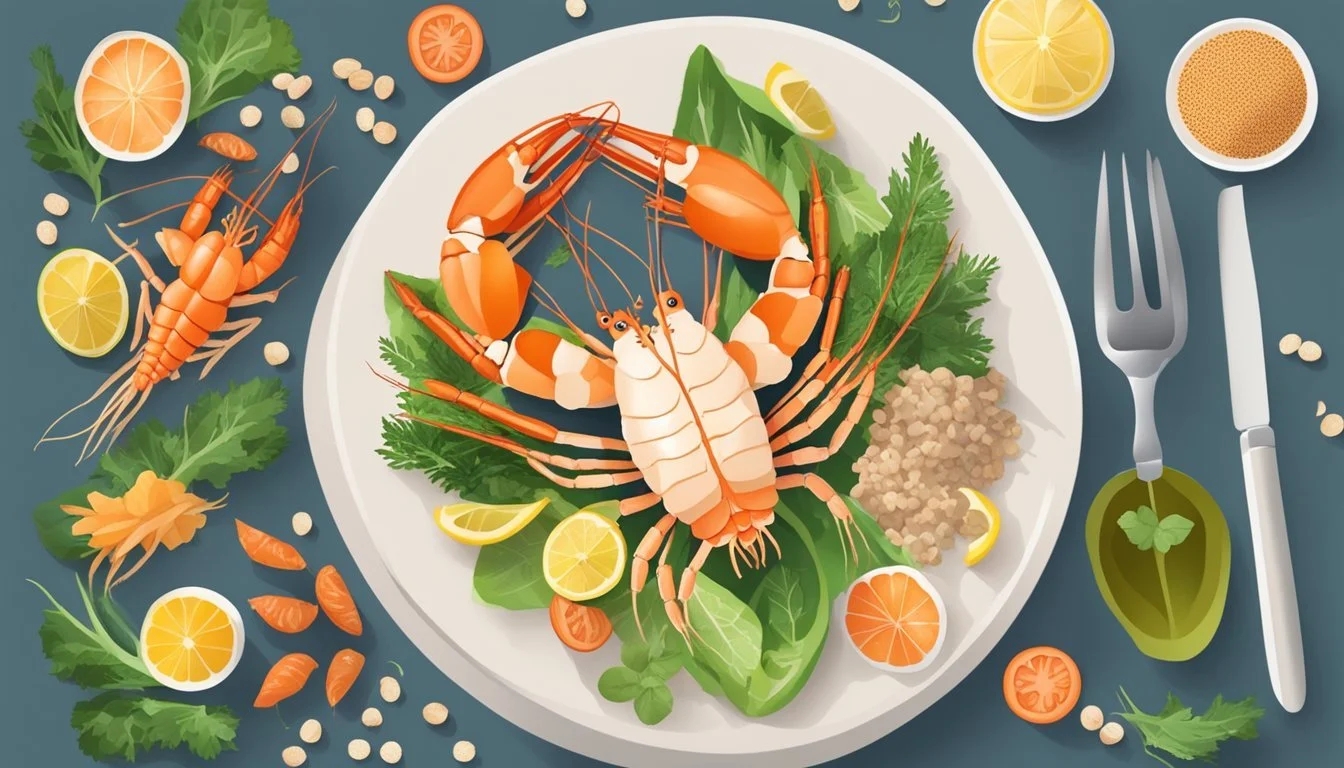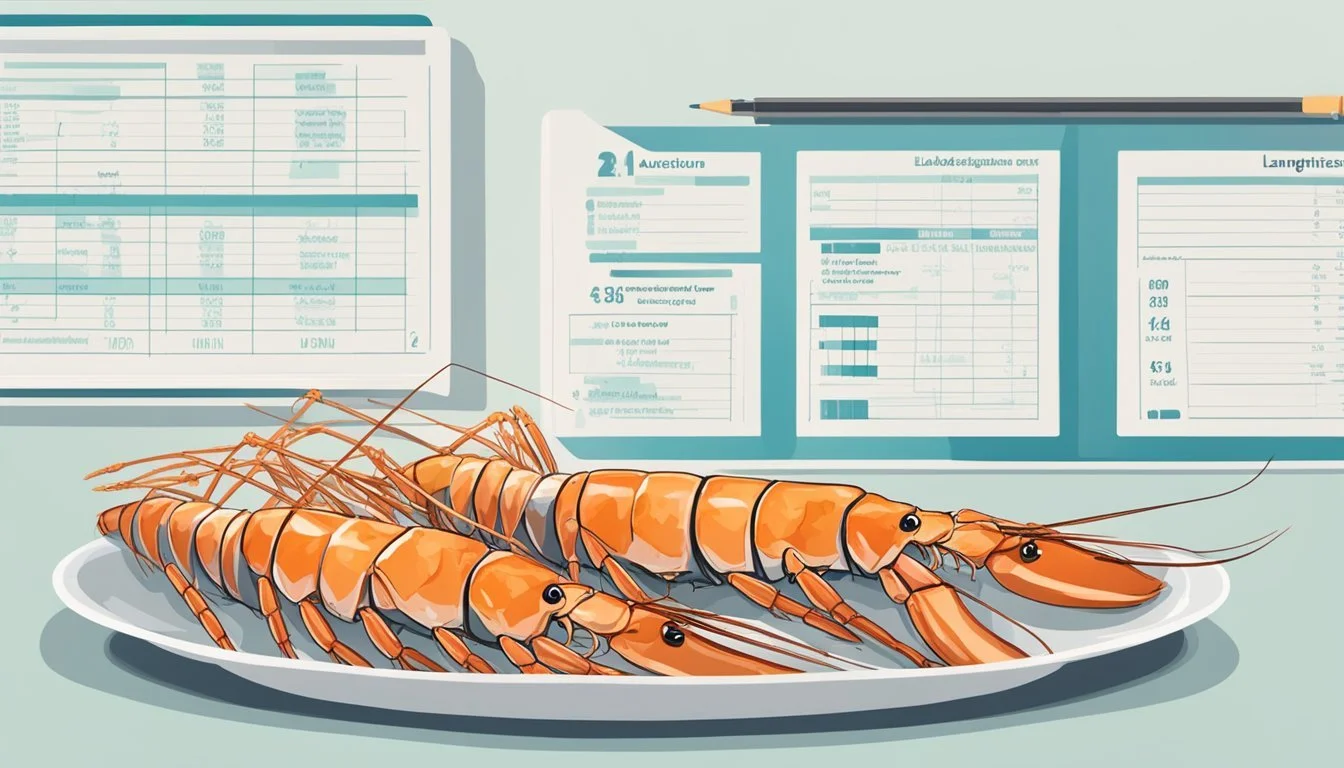Can Diabetics Eat Langoustines?
Understanding Seafood Choices for Diabetes
Langoustines, often referred to as the "Norwegian Lobster," might intrigue diabetic individuals pondering if this delicacy can fit into their diet. Yes, diabetics can eat langoustines. This shellfish is low in carbohydrates, making it a suitable option for blood sugar management. With high protein content and minimal fat, langoustines offer a nutritious alternative to many meats.
Langoustines are rich in essential minerals such as phosphorus, zinc, and copper, which are crucial for maintaining bone health and overall bodily functions. Their low glycemic impact makes them a valuable addition to a balanced diabetic diet. Combining langoustines with non-starchy vegetables can create a filling, blood sugar-friendly meal.
By incorporating langoustines sensibly and pairing them with other low-carb, nutrient-dense foods, people with diabetes can enjoy a diverse and satisfying menu. Their sweet, delicate flavor not only enhances meals but also offers a healthful choice that supports diabetes management.
Understanding Diabetes and Dietary Concerns
Individuals with diabetes must carefully manage their diet to maintain stable blood sugar levels. This includes understanding the types of diabetes, monitoring carbohydrate intake, and maintaining balanced blood sugar levels.
Types of Diabetes and Nutritional Implications
There are three primary types of diabetes: type 1, type 2, and gestational diabetes. Each requires different dietary strategies.
Type 1 diabetes involves little to no insulin production, necessitating careful carbohydrate counting and insulin administration. Type 2 diabetes is often linked to insulin resistance and excess body weight. Diet for type 2 diabetes focuses on reducing carbohydrate intake and improving insulin sensitivity. Gestational diabetes develops during pregnancy and requires careful meal planning to protect both mother and child.
Monitoring Carbohydrate Intake
Carbohydrates significantly impact blood sugar levels. People with diabetes need to monitor their carbohydrate intake meticulously.
Carbohydrate counting helps determine how much insulin is needed to manage blood sugar after meals. Foods with high glycemic index (GI) values raise blood sugar quickly and are generally avoided. Instead, low-GI foods like vegetables, whole grains, and legumes are preferred. Meal planning tools, such as the diabetes plate method, help portion meals effectively: half the plate with non-starchy vegetables, a quarter with lean proteins, and a quarter with complex carbohydrates.
Importance of Balanced Blood Sugar Levels
Maintaining balanced blood sugar levels is crucial to avoid complications such as neuropathy, kidney damage, and cardiovascular diseases.
Aiming for an A1c level below 7% is often recommended for diabetes management. Regular monitoring of blood sugar levels helps to adjust diet and insulin as needed. Exercise also plays a vital role in controlling blood sugar by increasing insulin sensitivity.
Strategies for balanced blood sugar include eating at regular intervals, choosing low-GI foods, and incorporating plenty of fiber. Avoiding sugary snacks and drinks helps prevent spikes in blood sugar levels.
Nutritional Profile of Langoustines
Langoustines are not only a delicacy but also provide a wide range of nutrients beneficial for overall health. This section looks at the protein, vitamins, minerals, fat content, and cholesterol found in langoustines.
Protein Content in Langoustines
Langoustines are an excellent source of protein. A 3.5-ounce (100-gram) serving provides approximately 15-20 grams of protein. This high protein content makes them a valuable addition to the diet, aiding in muscle repair and growth.
Amino acids, the building blocks of proteins, are abundant in langoustines. They contribute to various bodily functions, including enzyme activity and immune responses.
Vitamins and Minerals in Langoustines
Langoustines contain various vitamins and minerals that contribute to health and well-being. They are especially rich in vitamin B12, which supports nerve function and the production of red blood cells.
Mineral Function Phosphorus Bone and teeth health Zinc Immune system support Copper Iron metabolism
Vitamin E and selenium are also present, providing antioxidant benefits that help prevent cellular damage.
Fat Content and Cholesterol Considerations
Langoustines have a relatively low-fat content, with a 3.5-ounce serving containing about 1-2 grams of fat. Most of this fat comprises omega-3 fatty acids, known for their heart health benefits.
Despite low-fat levels, langoustines do contain cholesterol. A standard serving may have around 100 milligrams of cholesterol. While this is not excessively high, individuals managing their cholesterol levels should monitor their intake.
Incorporating langoustines into a balanced diet can provide essential nutrients without excessive fat or cholesterol.
Incorporating Langoustines into a Diabetic Meal Plan
Langoustines are a nutritious and delicious option relevant to a diabetic meal plan. They offer high-quality protein and a low carbohydrate content which makes them suitable for maintaining healthy blood sugar levels.
Creating a Balanced Plate
A balanced plate featuring langoustines should include various food groups to ensure nutritional adequacy. Start with non-starchy vegetables like broccoli, spinach, or bell peppers. These vegetables provide essential fiber and nutrients.
Add a serving of whole grains, such as quinoa or brown rice, for sustained energy. A small garden salad with a light dressing can complement the meal. Langoustines provide protein, helping maintain muscle mass and repair tissues without spiking blood sugar levels.
Portion Sizes and Frequency
Portion control is critical in a diabetic meal plan. The recommended serving size for langoustines is approximately 3-4 ounces. This amount provides ample protein without overloading on calories or cholesterol.
Eating langoustines 1-2 times per week can be beneficial. Pairing them with different side dishes ensures a variety of nutrients. Avoid consuming large or frequent portions to keep cholesterol and sodium intake in check.
Complementary Foods for Langoustines
Incorporating complementary foods enhances the health benefits of langoustines. Non-starchy vegetables like zucchini, cauliflower, or green beans work well as side dishes.
Whole grains such as quinoa or brown rice add substance and fiber, aiding digestion. For added fiber and nutrient diversity, consider adding a small portion of legumes. These options enhance the meal’s nutritional profile and make it more filling.
Langoustines can be paired with a light lemon and herb sauce to keep it flavorful yet healthy. Keeping the meal light on added sugars and unhealthy fats ensures that it remains diabetes-friendly.
By carefully planning and balancing their meal with appropriate portion sizes and complementary foods, those with diabetes can enjoy langoustines without compromising their health.
Safe Preparation Methods for Langoustines
Langoustines can be a healthy choice for diabetics if prepared properly. It's essential to use cooking techniques that retain nutrients and avoid unhealthy ingredients like added sugars and harmful fats.
Cooking Techniques to Retain Nutrients
When boiling langoustines, bring a pot of salted water to a boil and cook for 3-4 minutes until they turn pink. This method maintains their high protein content while preserving essential nutrients.
Grilling is another excellent option. Split the langoustines lengthwise, brush with olive oil, and season with salt and pepper. Grill over medium-high heat for 2-3 minutes on each side. This method adds a slight smoky flavor without compromising nutritional value.
Sautéing in a small amount of butter or olive oil with garlic can also be nutritious. Cook the langoustines for 2-3 minutes over medium heat, which helps retain their natural flavors and nutrients.
Avoiding Added Sugars and Harmful Fats
To keep langoustines diabetes-friendly, avoid using sauces and marinades that contain added sugars. Instead, rely on natural seasonings like herbs, garlic, and lemon juice.
Avoid frying, which can introduce harmful trans fats and added saturated fats. Instead, opt for healthier cooking fats like olive oil or a small amount of butter.
For grilling, use minimal amounts of oil to reduce calorie intake and avoid adding unnecessary fat. Langoustines have a rich, natural flavor, so simple seasoning with herbs and spices can enhance their taste without unhealthy additives.
By focusing on these healthy preparation techniques, langoustines can be a delicious and nutritious choice for people managing diabetes.
Potential Health Benefits and Risks
Langoustines may offer a range of benefits such as helping with weight management due to their nutritional profile and potentially enhancing heart health. Although these shellfish also come with risks like allergies and dietary restrictions for certain individuals.
Weight Management and Langoustines
Langoustines are low in calories and carbohydrates, making them a suitable option for those aiming to lose weight. They are high in protein, which can aid in muscle building and maintenance. Protein-rich diets are often recommended for weight management as they increase satiety, reducing overall calorie intake. The high protein content of langoustines can be particularly beneficial for those looking to maintain a healthy weight while managing diabetes.
Impact on Heart Health
Consuming langoustines may have a positive impact on heart health. These shellfish contain Omega-3 fatty acids, which are known to support cardiovascular health. Omega-3s can reduce levels of triglycerides and may help lower blood pressure. This makes langoustines a heart-healthy option that can fit within the dietary guidelines provided by organizations like the American Diabetes Association and CDC, which both advocate for foods that promote cardiovascular wellness.
Allergies and Dietary Restrictions
Langoustines, like other shellfish, can cause allergic reactions in some individuals. Shellfish allergies are among the most common food allergies and can lead to serious reactions. People with known shellfish allergies should avoid langoustines. Additionally, those on specific dietary restrictions may need to consult a healthcare provider before including langoustines in their diet. It is crucial to consider these restrictions to ensure they do not negatively impact overall health.
Langoustines can be a healthy addition to the diet for many, but it is essential to be aware of individual health needs and potential risks.
Additional Considerations for Diabetics
When consuming langoustines, diabetics should be mindful of potential interactions with their diabetic medication and the importance of regular monitoring of their blood sugar levels.
Interaction with Diabetic Medication
Langoustines are rich in protein and low in carbohydrates, which helps in maintaining stable blood sugar levels.
Individuals should consider how such protein-rich foods may affect their insulin requirements.
Consuming langoustines can support a low-carb diet, but it's essential to observe how it interacts with glucose control medications.
Regularly consuming protein without adequate balancing of carbohydrates can sometimes lead to unexpected fluctuations in glucose levels.
Adjustments in medication might be necessary, and individuals should consult with their healthcare provider for precise advice tailored to their condition.
The Role of Regular Monitoring
Frequent monitoring of blood sugar levels is crucial for diabetics who include langoustines in their diet.
Langoustines contribute minimally to glucose spikes, but monitoring helps in understanding their impact.
Monitoring should be done before and after meals to gauge any significant changes.
Maintaining a food diary, noting quantities, and timing can provide valuable insights.
Also, regular check-ups ensure that any necessary adjustments to diet or medication are timely.
Avoiding sugar-sweetened beverages and processed foods alongside a balanced diet featuring langoustines may enhance overall glucose management.








